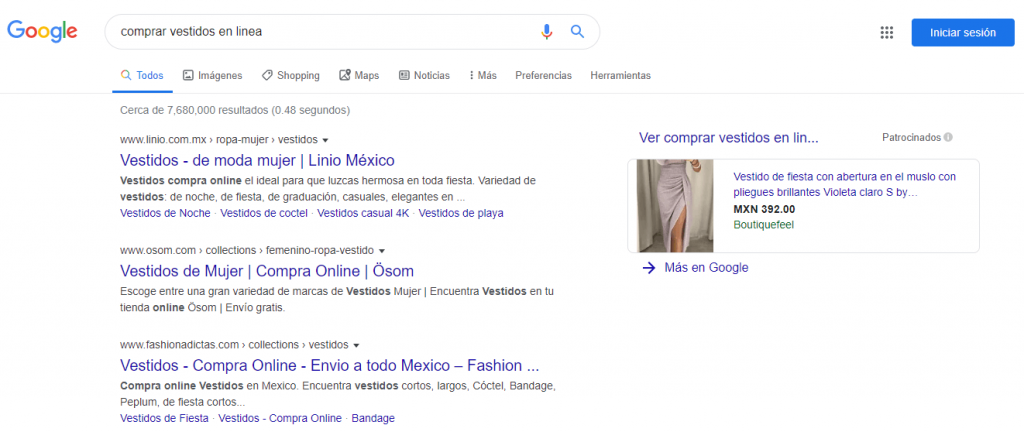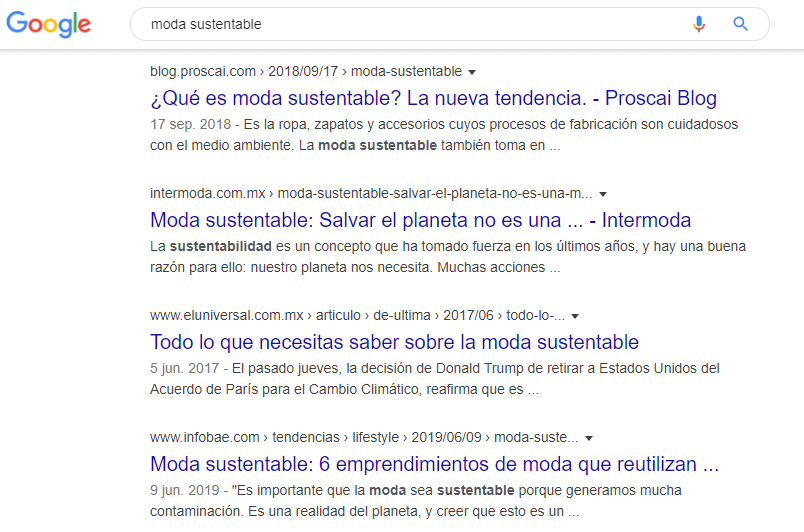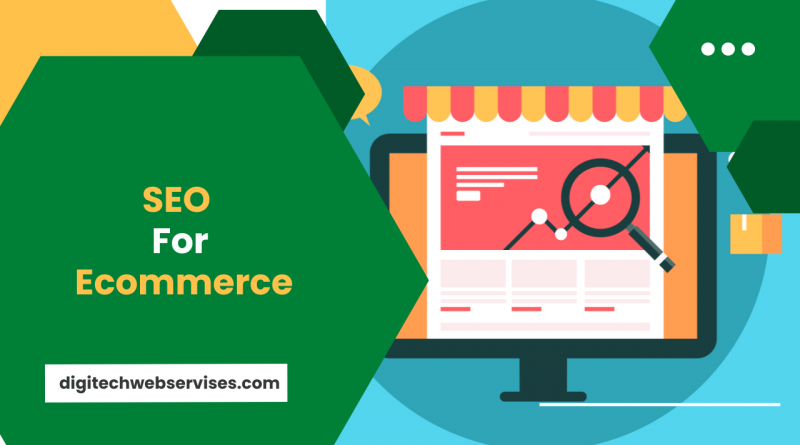SEO for Ecommerce: 6 Techniques to Bring Virtual Stores to the Top of Google
Implementing a good SEO strategy for e-commerce is essential if you want to increase your online sales. Here we tell you what are the key factors that you must take into account to create it.
Despite what many believe, to sell online it is not enough just to set up a virtual store.
Although it is a first step, taking care of the organic positioning strategy is just as important to attract new customers to your business.
Therefore, in this article we will review what are the fundamental elements that every SEO strategy for e-commerce must have.
Is SEO for eCommerce different from other websites?
Table of Contents
The SEO also known as search engine optimization (from the English Search Engine Optimization ) is a strategy that seeks to improve the ranking of a website to appear in the top results of a search.
This strategy can be applied on all types of websites, from blogs, virtual stores and corporate websites to forums or educational platforms.
Although the method of applying SEO on all of these sites may seem similar, the reality is that there are substantial differences in the structure, functionality, and goals of each website that you should be aware of before beginning optimization.
For example, optimizing a blog post is not the same as optimizing a product page. While the first has long texts that seek to inform or entertain users to increase their time on the pages, the second seeks to close a sale in the shortest possible time.
Either way, it is undeniable that you need to implement SEO optimizations in your e-commerce as part of a complete Digital Marketing strategy . Below we explain why.
Read More: SEO Consultancy Bangalore
3 outstanding advantages of SEO for e-commerce
Applying an SEO strategy for e-commerce is necessary for any business looking to improve their sales on the Internet. Here are 3 good reasons to prove it.
You attract quality organic traffic
Positioning your virtual store in the first places of the SERP s will make more people come naturally and know your products.
In fact, according to The Search Engine Journal , 93% of online activity begins with a search.
Furthermore, 44% of people who shop online start with a Google search according to nChannel. Getting more traffic, consequently, brings more sales opportunities.
In the end, millions of searches are made every day that show users’ purchase intention. Being positioned at the top of the results list for those queries is essential to acquire users who are more ready to buy.
For example, there are 260 monthly searches for the keyword “buy dresses online” according to SEMRush .
It is not such a high number in absolute terms, but there is no doubt that this user already has the certainty of what he wants to acquire, so attracting him to the store’s website is very interesting.

Also, imagine the possibility of being in the first positions on this results page without having to spend lots of money to have that ad in the corner? That’s what SEO optimizations allow.
Closing more sales
One of the main SEO optimizations for e-commerce is on the product pages.
By becoming more visible in the SERP, the users most interested in buying that specific product will land in your e-commerce with a clearer purchase intention.
This is important if you consider that 39% of all global e-commerce traffic is directly related to organic traffic according to Bluelist.
That’s why it’s time to spend time producing well-structured product pages, with striking descriptions and a technical configuration that favors search engine crawling .
You improve the CTR of your pages
The CTR is an indicator that allows you to assess how well your pages respond to a user’s search intention.
This metric is linked to your choice of keywords and other aspects of the SEO title and meta descriptions.
In general, SEO for virtual stores helps you make the necessary adjustments to appear in the correct results and improve your click rate with respect to the number of people who view your website in the SERP.
An interesting practice to improve your performance in this regard is to extract insights from the Google Search Console “Search Results” dashboards .
In them you can see the queries that users make to get to your websites and possibly include those terms in the titles and meta descriptions of your pages.
With this type of information you can stimulate user interest in your product pages, without scaring them with capitalized text like this:
Possibilities of SEO for virtual stores
Applying an SEO strategy in e-commerce has many fronts for action. Here you will know three of the areas that you should pay the most attention to.
Corporate blog
A good practice for e-commerce is to implement your own blog and execute a Content Marketing strategy to deal with issues related to your sector or issues of interest to your users.
Having long-lasting posts – over 1,000 words – the blog is one of the most effective channels to attract organic traffic.
This resource is also very interesting when the virtual store operates in a defined market niche, to ensure that users hooked on the type of product it offers.
An example is that of companies that sell sustainable clothing. If they produce a good blog post that ranks at the top of Google for the keyword “sustainable fashion”, they can generate authority and relevance in this segment.

In fact on the first page of Google results in Mexico for that keyword there is currently no publication from an e-commerce website. These are opportunities that cannot be missed!
Product Pages
Positioning product pages is essential in SEO for e-commerce. And it is that these are finally the ones that will convince future buyers to buy a product.
If you do not apply SEO on your product pages to gain positions, it will be impossible for users to know your products organically.
In this content we propose the best techniques for preparing product descriptions in a virtual store.
Category Pages
Category pages are also another option that virtual stores have to position themselves in Google .
Optimizing these pages is valuable, because by bringing all your available products of the same class in one place, your potential customers will have access to all your inventory.
In addition, structuring the pages into categories is a requirement to deliver a good user experience (UX), which at the same time is a criterion highly valued by Google to classify its results .
How to do SEO for e-commerce?
The time has come for practice! Next, we will review the stages of an SEO strategy for virtual stores so that you can start working right now.
1. Set a SMART goal for your strategy
The first thing you should do in an SEO strategy is define the objective you want to achieve.
To do this, setting SMART goals is ideal, because with them you can keep an organized follow-up of your progress.
SMART goals are:
- specific,
- measurable,
- achievable,
- realistic,
- a defined period of time.
An example of a SMART objective can be: “increase the virtual store visits by 10% at the end of the first quarter of 2020”.
As you can see, this is an achievable goal, which is not exaggerated and can be monitored throughout the quarter and at the end of it to see if you achieved it.
2. Define the keywords of your products
After establishing the overall objective of the strategy, the next step is to take care of keyword analysis. This stage is the backbone of any SEO strategy for eCommerce.
In particular, the keywords for e-commerce focus on informing or selling.
In the first case, you must have a blog to position long-tail keywords that answer your users’ frequent questions about your products. They are ideal for educating the user.
For the second case, the keywords must be focused on the products and, therefore, they are usually head-tail .
For example, users interested in an iPhone will type in the name of the latest model on Google, perhaps accompanied by the words “price” or “buy.”
If you manage to position your product page for this keyword, you will already have half a sale made.
At the same time, these keywords tend to have enormous competition, so you can’t leave out the highly-rated long-tail, such as the example we showed of “buying dresses online”.
To find your keywords, you can use Google’s Keyword Planner or SEMRush’s Keyword Research tool.
You can even scan your competitor’s website to find out what their keywords are and guide you with that!
With the keyword ideas you get, you will have to choose only one word per product to avoid the so-called ” cannibalization “. For that you can use the resource of the canonical tags, which inform the search engine which page should be displayed to the user.
The goal is to choose the one that best suits what you sell and that matches the user’s search intention . Also, ideally, you should have a considerable search volume and a low level of competition.
But considering that this is not always going to happen, you can use Topic Clusters strategy . It’s about choosing a main page, which may be your most prominent product, and strengthening it with internal links on related pages.
In this way you will make the search engine algorithm understand that the product is a focus of your company. Thus, you will reach the page of this product through several different routes, with those internal links that you established.
3. Optimize your product and category pages
Once you have identified the keywords that you will use in your products and categories, you should perform SEO On Page optimizations on each page.
Take care of meta tags
The meta tags are information in HTML describing the content of a page for search engines. Some of the most important ones are the SEO title, the meta description and the H1 title.
Among the optimizations you should make is the use of the keywords you found in each meta tag of your product and category pages .
Remember, each page must have a unique title and description to avoid cannibalization and duplicate content.
To create more impact on your meta tags, you can include:
- exceptional product characteristics,
- words that call to action such as “buy”, “learn”, “offers”, “on sale”, etc.,
- your Unique Selling Proposition (USP), such as free shipping, one-day delivery, refunds, etc.
Extend the description of your products
Product descriptions, in addition to giving your users more information about what you sell, show Google what your page is about . Therefore, you must create original and attractive descriptions.
One of the best SEO practices for e-commerce is not to copy the information you find on the manufacturer’s page, since you can be penalized for having duplicate content.
A good description has the following elements:
- is unique
- include your keyword,
- incorporates latent semantic indexing (LSI) keywords to enrich the information Google receives,
- It has at least 500 words to avoid Thin Content problems .
Optimize your images
Add Alt Text tags to each image you upload to your virtual store.
Being the description of an image, the Alt Text must include your keyword to start positioning in the search engines.
Create a friendly URL
The URL friendly are easy to understand directions by users , as cast key information so they can quickly know the page content.
To create friendly URLs you must take into account the following aspects:
- use the hierarchy of your page (domain, categories, sub categories and product),
- keep them short and simple,
- include your keyword,
- use hyphens to separate the words,
- avoid using parameters (color, size, price, score, etc.).
Add structured data
Structured data enriches your snippets by displaying more information about your product directly in SERPs.
These data show, for example, the ratings of other users, the price or availability of a product.
Adding structured data, in addition, brings you closer to conquering the zero position of Google: we call them Featured Snippets .
For virtual stores, the most interesting types of featured snippets are those of lists and tables. It is worth optimizing your content to reach that position, since you gain a lot of visibility in the SERP.
4. Optimize your home page
The home page of your virtual store is the gateway to the internal pages of your website. Therefore, here more than anywhere else, you should offer the best possible user experience .
From your homepage you must link your internal pages:
- product pages,
- Blog,
- contact pages,
- category pages,
- etc.
As a general recommendation, try to include a very striking H1 title, with an image that reflects the essence of your store. Don’t forget to add CTAs linking to your best-selling products.
5. Improve the performance of your virtual store
Creating a user-friendly virtual store is essential to generate more sales opportunities. So one of the best SEO practices for eCommerce is to check if everything inside your store is working as it should .
Some of the aspects you should consider are:
- reduce loading times ,
- verify that each button on each page works correctly,
- make sure the payment gateway is working,
- Optimizes the view for all devices through a responsive web design . Keep in mind that 1 in 3 searches on smartphones are performed before visiting an online store.
6. Work on technical SEO for e-commerce
Having extensive catalogs, eCommerce pages often have a lot of technical SEO issues.
Therefore, it is important to identify and solve these problems through a constant audit of your website.
Below, we explain some of the factors that you should take into account.
Take care of the architecture of your site
As a general rule, the structure of a virtual store looks like this:
Home> Categories> Subcategories> Products
This is to keep all your pages accessible in less than 3 clicks and, in this way, help the user get to where they want to go with more ease.
Fix duplicate content issues
In virtual stores it is common to find duplicate content problems. This is because there are very similar products in their catalogs, with similar descriptions that Google can relate as duplicate content.
For example, enter a page for a black watch and another for a red watch.
Solving these problems is crucial to avoid penalties !
To do so, we present three alternatives.
Use Canonical Tags
In layman’s terms, canonical tags allow you to show Google which is your favorite page out of your entire watch catalog to indicate that this is where you should redirect all traffic. This page may be the one that attracts the most traffic or that of your best-selling product.
To place this tag, you must go to the head section of your canonical pages and add a <link> element, also using the references “rel” and “href”. The result would be the following:
301 redirects
It may happen that your users try to access your e-commerce through different URLs, for example:
- your domain . com
- www . your domain . com
- http : // yourdomain . com
- https : // yourdomain . com
In these cases, Google doesn’t know what your main URL is. To fix it, you can put a 301 redirect on your home page to redirect all visits to other URLs to the page of your interest.
No Index tag
Finally, you can hide the pages that do not interest you , that have not generated sales or that have a description taken from the manufacturer’s page so that Google prioritizes the indexing and positioning of your most important pages.
This can be done using the No Index tag, which you can add to the HTML of each page you want to hide.
Link building for e-commerce
The link building is one of the best SEO practices for e – commerce . There are multiple techniques to get links. Here we leave you the main ones.
- Find sites that link to your competition (and can link to you) such as forums, link pages and directories.
- Point to international websites within your niche and contact them.
- Donate money to get links from non-profit sites.
- Implement broken link building (request that a website replace a broken link of yours with one from your page).
6 mistakes to avoid in SEO for eCommerce
1. Try to position for terms with huge competition
Instead of trying for large categories, focus on positioning individual products and category pages with less competitive terms.
2. Not having the SSL security certificate
If your virtual store has the HTTPS protocol , you are assuring your users that their information – such as name, location or credit cards – is encrypted. This is also important for Google, which for a few years has favored websites with HTTPS and SSL .
3. Delete already indexed product pages
A page that has already been crawled and indexed is a valuable source of traffic. If you have run out of inventory, instead of deleting the page you can specify changes to the product on the page or redirect users to similar product pages.
4. Have orphan pages
You must make all your product pages linked within the structure of the website. Remember, if possible in less than 3 clicks from the home page. If you have orphaned pages, you cause those products not to be easily found.
5. Do not work on a CMS for virtual stores
Something that can greatly facilitate SEO optimization for your virtual store is having it built in the correct CMS .
With these platforms —such as WordPress (with the WooCommerce plugins), Shopify, Prestashop or Magento— you can manage your catalog and inventory, follow your users, track order orders and receive payments, among other actions.
6. Not having a blog or a Content Marketing strategy
A Hubspot study found that companies that have blogs get 126% more qualified leads than those that don’t.
Therefore, creating a blog, with your content strategy, is essential for an SEO strategy for e-commerce. With these tools you can create evergreen content that positions you better.
Those can be product reviews, answers to frequent questions or any topic of interest to your buyer person . The possibilities are endless.
Learn the best techniques to attract more potential customers by downloading our e-commerce content strategy ebook for free !



